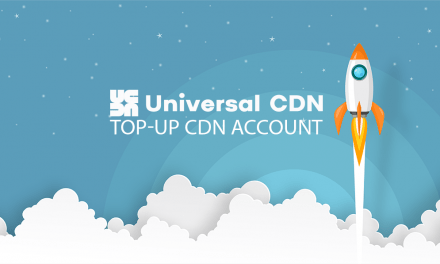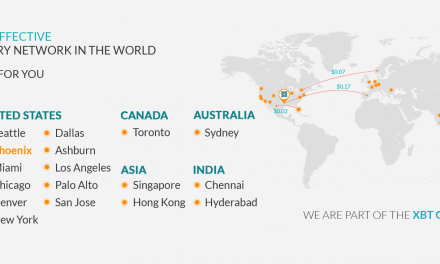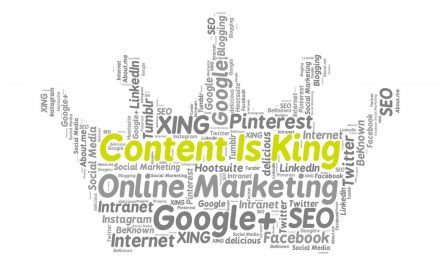If you are consciously living in the same year as I am, you should know – we live in the digital content era!
From my perspective (as a marketing creature) there are only 3 types of content – the self serving one, the value bringing one and the actual literature as an art.
First one – being made to fulfill some kind of own agenda – could be marketing & business goals driven, manipulation, sales, misdirection or an actual scam.
And second – well, let’s say it that way – when you consume it, you get away with more, than before that.
Third one is clear – there is nothing to discuss…
But the first two – there is the real deal. The difference between them could make or brake your brand.
However, according to the Content Marketing Institute, only 41 percent of marketers think their organization is clear on what an effective or successful content marketing program looks like..
And there are more bad news: Less than 25 percent of B2C and 50 percent of B2B content earns any engagement at all…
That’s a lot of wasted effort and resources invested in content that ends up just floating around the web, winning zero business benefits for its creators.
So if we get back to the introduction – not only they got zero return on investment, but they provide zero value either! What a nonsense!
So what could we actually do about that nonsense?
If you are a brand, the first thing you must realize is that content is not about what You want to say.
It is about what your audience actually wants to hear!
And yes – you should think of a specific audience, based on your understanding of their needs, preferences and intent.
So… GET TO KNOW YOUR AUDIENCE
There’s much more to this than keyword research.
Remember the term “Buyer’s persona”…?
If not, just think how and where do your consumers live online?
What’s their intent when performing certain types of searches or engaging your brand in social?
What action are they most likely to take at every point?
Understanding the audience you’re writing for is the foundation on which your content is built.
Once you have above the average understanding of your audience, it’s time for the next strategic element:
THE ENVIRONMENT
How well do you understand the competitive environment in the verticals for which you’re creating content? Today, you’re competing for eyes, years and clicks.
Your competitors may be other companies, but you could be competing for space under the sun against media brands, bloggers, influencers and many more.
Without that bigger-picture of the attention over the battle field you are trying to conquer, you’re flying blind.
To use that analogy even further, just imagine how much better a general looking for new territories would do, if he evaluates the gaps not covered by his enemies and all the possible victorious outcomes those could open for him.
The same way your competition provides you with opportunities to create engaging content that speaks to people in the key moments that matter, when you look at the “informational gaps” that are untouched by their content yet!
That said, we got to the next important step:
CONTENT FORMAT
Which media will you use to best illustrate your message, engage your audience and reach people across platforms?
Don’t limit yourself; a single piece of content can contain several types of media, including socially shareable images, quick video clips, audio and voice elements and embedded media, like presentational slides.
Think of it like that – a single, hard-working ranch mom from Texas will have quite different attention triggers than the wall-street shark with the blond hair from the next door.
They could both be positioned closely in demographic terms (30-40 y.o., big city, hard working – financially independent, well-educated, politically aware, with above average income, luxury magazines readers, etc.) and in the same time to consume totally different types of content.
This gives you various ways to convey your message, but it also allows you to appear in different types of search results (like Google Images) and on different search platforms (like YouTube or even Siri & Alexa), as well.
Now, being aware that format matters, we arrive at our next key element:
MEASUREMENT
In today’s digital era there is a tool to measure everything.
Literally everything! There are even tools to measure how much toilet paper you are consuming on a monthly basis!
Not to mention the open rates of your videos, click-trough rates of your mails or number of listeners to your podcasts.
And no wonder! What’s the point of creating any content, if you can’t measure the ROI of your not-so-little efforts…
Just to be thorough:
- 72 percent of marketers are measuring their content marketing ROI.
- 51 percent are using a measurement plan to provide both insight and progress toward the business goals.
- 79 percent are using analytics tools.
Ok, but How can you make your content marketing efforts measurable?
By choosing metrics that matter and are align with the business goals.
Yes, I’m talking about the so-called KPIs (Key Performance Indicators)
But how to choose KPIs that actually gives you the real picture of your content’s success?
Ideally, you’re going to measure your content’s performance through the entire funnel.
Starting with brand awareness creation, followed by lead generation and audience-building, to the nurturing, conversion, sales and getting to the post-sales, retention and evangelism.
Usually such indicators are things like site traffic, lead quality, social shares, time spent on site and conversion rates…
But your business has his own right indicators for sure! You need to figure them out based on your business goals.
So you have a content, it’s created, positioned and aimed to the right audiences, it’s made according the competition landscape, you had armed with the right KPIs to measure it…now what?
Now you need to make it physically findable via:
SEARCH ENGINE OPTIMISATION
One way to do it is by improving your visibility and key metrics like engagement, time on site, sharing and conversions with the magic of strategic content optimization.
Apply readability standards and optimize title tags, meta descriptions, subheadings, images and text in line with current SEO standards.
Keep visitors clicking and engaged with smart internal linking that both improves user experience and resurfaces your most popular, highest-converting content.
And, let’s not forget about the technical side of things…
Site structure and hierarchy, meta data, mobile readiness, internal linking, site speed, coding errors and other technical SEO factors can all affect your content’s ability to rank.
Further, they can affect readers’ ability to access and enjoy the content and then take next steps.
Get your technical and non-technical SEO in order to set your content team up for success.
Once you have all that – findable, optimized, well-targeted content, you need to make sure
IF IT IS ACTIONABLE…
Make your call to action (CTA) to click through and read the content crystal-clear.
Avoid placing competing CTAs, and resist the urge to try to sell in every communication.
Your content is designed to do the work of helping them take the next logical step in their customer’s journey.
Pick strategically-right places for your appeals and DO NOT try to close them every single step of the way!
What action would you like readers to take?
Which of your site’s conversion pages is currently converting best and generating the highest-quality leads?
These insights will help guide your CTA selection, but remember, your CTAs should also match the consumer intent you’re targeting with each piece.
To make a reference back to our KPIs – things like social interactions and site visits could give you a great idea of how well your content performs in search and social.
Now, if you are really interested in being a good content creator, you should most definitely consider making your content multidimensional with elements to build brand authority, inspire or educate on product (or service), encourage engagement and more.
Moreover – you should think about incorporating testimonials into your content (as we did in our blog) , where they can serve the purpose of providing social validation within the context of an existing consumer experience.
What about you?
THE AUTHOR PERSONA
Mentioning the Author could be crucial to the content’s success.
It could provide your content with the needed greater authority and build the profiles of key employees and executives (if they are involver or are the authors themselves)
Our content journey is almost over. But before that…
…before you sit back and relax after publishing your content, you should really think about…
HOW IS IT GOING TO REACH YOUR AUDIENCE
And I mean in technical terms…
Being in the content business, you probably already know, that if a piece of content – no matter if it is a blog article, set of pictures, video-clip, audio-stream or whatever – has it’s limitations in term of being accessed in real time by big amounts of users simultaneously.
Here’s where services like CDN (Content Delivery Network. If not familiar – check here) could come very handy!
Moreover, now there are very affordable ones that are not only going to provide you with the needed services, but are going to help you every step of the process!
I would like to finish with a thought that always pops up in my mind when thinking of content:
“The great content should serve a purpose of itself, but bring bigger value to others and most definitely be as good as art!”





